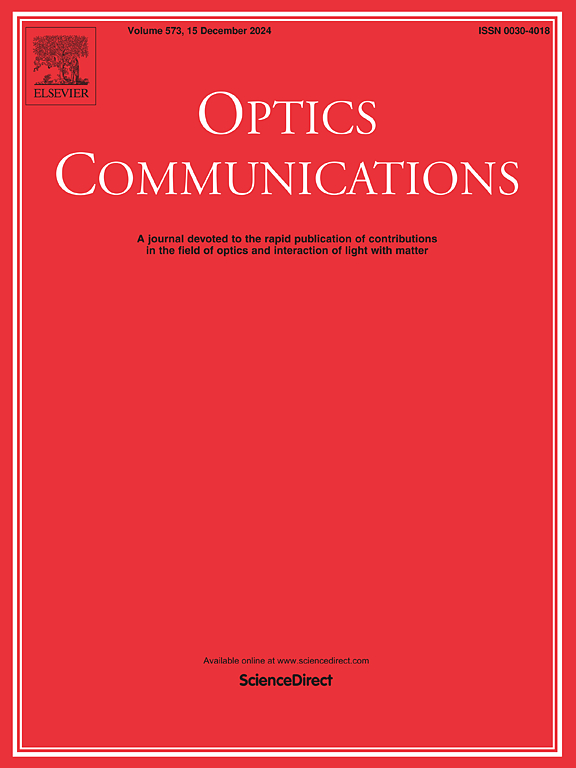High efficiency and tunable second harmonic generation in electro-optic Q-modulated metasurface with etchless lithium niobate
IF 2.5
3区 物理与天体物理
Q2 OPTICS
引用次数: 0
Abstract
Second harmonic generation (SHG) at nanoscales have broad applications in integrated optoelectronic devices. In this paper, we numerically demonstrate highly efficient and electrically tunable SHG in metasurface with etchless lithium niobate (LN), based on symmetry-protected bound states in the continuum (BIC). Since the excellent electro-optic (EO) properties of LN, the symmetry of structural refractive index can be very slightly broken under an external voltage, resulting in the excitation of quasi-BIC with an ultrahigh quality factor ( factor). When asymmetry parameter is set to be , a quasi-BIC with factor as high as magnitude is excited, achieving 1.2% conversion efficiency of SHG under 0.1 kW/cm input intensity. We also show that the factor and conversion efficiency can be actively and finely modulated by tuning asymmetry factor based on EO effects of LN. Our work provides a feasible idea to excite quasi-BIC with ultrahigh and accurately tunable factor, and paves a way in designing electrically tunable ultracompact light sources.
无腐蚀铌酸锂电光调q超表面中高效率和可调谐二次谐波的产生
纳米级二次谐波在集成光电器件中有着广泛的应用。在本文中,我们数值证明了基于连续介质中对称保护束缚态(BIC)的无蚀刻铌酸锂(LN)在超表面上的高效和电可调谐SHG。由于LN优异的电光特性,在外加电压作用下,其结构折射率的对称性会被轻微破坏,从而激发出具有超高品质因子(Q因子)的准bic。当不对称参数设置为Δn=0.001时,激发出Q因子高达5.4×107量级的准bic,在0.1 kW/cm2的输入强度下,SHG的转换效率达到1.2%。我们还表明,基于LN的EO效应,可以通过调整不对称因子Δn来主动和精细地调制Q因子和转换效率。我们的工作提供了一种用超高精确可调Q因子激发准bic的可行思路,并为设计电可调超紧凑光源铺平了道路。
本文章由计算机程序翻译,如有差异,请以英文原文为准。
求助全文
约1分钟内获得全文
求助全文
来源期刊

Optics Communications
物理-光学
CiteScore
5.10
自引率
8.30%
发文量
681
审稿时长
38 days
期刊介绍:
Optics Communications invites original and timely contributions containing new results in various fields of optics and photonics. The journal considers theoretical and experimental research in areas ranging from the fundamental properties of light to technological applications. Topics covered include classical and quantum optics, optical physics and light-matter interactions, lasers, imaging, guided-wave optics and optical information processing. Manuscripts should offer clear evidence of novelty and significance. Papers concentrating on mathematical and computational issues, with limited connection to optics, are not suitable for publication in the Journal. Similarly, small technical advances, or papers concerned only with engineering applications or issues of materials science fall outside the journal scope.
 求助内容:
求助内容: 应助结果提醒方式:
应助结果提醒方式:


